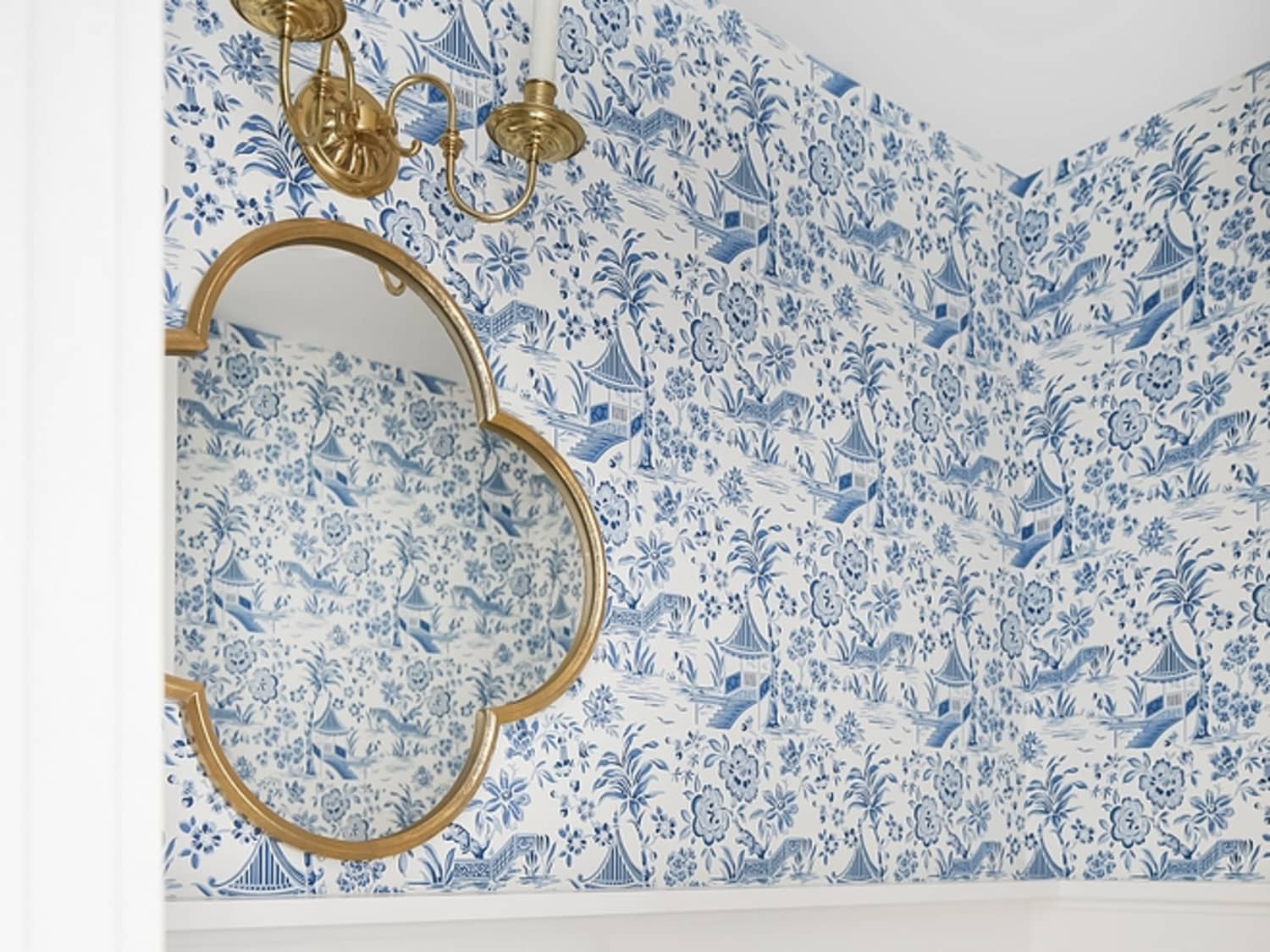Toile Design
A French word meaning “linen cloth” or “canvas,” toile is a type of canvas-like fabric that has been a popular decorating element since the mid-1700s. The term “toile” can have a few different meanings, including the canvas-like fabric itself, a repeated pattern on the fabric, or a test garment made from the fabric. For decorating purposes, however, “toile” refers to a pattern repeated on the fabric. Typically, the pattern depicts a highly complex, detailed, pastoral scene.
Pronounced “twall,” toile has a long, varied history across Europe and the United States. The fabric originated in Ireland sometime during the mid-1700s, but became an extremely popular decorating element across Britain and France. Despite its Irish origins, the term “Toile de Jouy,” meaning “cloth from Jouy-en-Josas”—a suburb of Paris—originated in France during the late 18th century.
5 Design Tricks for a Studio Apartment
After several hundred years’ of history, toile has a reputation as being a “stuffy” or outdated decorating element. Its popularity has ebbed and flowed over the years—with major surges in the 1700 and 1800s, Colonial America, the 1970s, and again in the 2000s—but toile has remained a classic decorating element that can still be found in homes across the world.
The History of Toile
As previously mentioned, toile was first developed in Ireland sometime during the 1700s. Originally, toile was used by a dressmaker or tailor to test a pattern on cheap, white or off-white fabric. Usually, the designer would create multiple toiles until the pattern was absolutely perfect.
Although toile originally had Irish origins, it became a well-known product of France. In 1760, Christophe-Philipe Oberkampf opened the first toile factory in Jouy-en-Josas, France, and the material was redubbed “Toile de Jouy.” Oberkampf worked with the famous designer Jean-Baptiste Huet to develop the classic patterns and styles of toile, which can still be found today.
Printed on white or off-white canvas or linen, toile often depicted a detailed pastoral scene, floral arrangements, and other images inspired by nature. The pattern was usually printed in a single color, like black, red, or blue, but brighter colors, like green or magenta, could occasionally be found.
Overtime, toile became most closely associated with upholstery in the home. Think: pillows, bedding, curtains, and upholstery for furniture. Toile wallpaper and toile clothing also became popular—the latter, especially, for high class functions, like garden or tea parties.
Settlers brought toile to North America during the Colonial Era, where it became a much sought-after item. Colonial Era toile is often found in American historical sites, like Williamsburg, Virginia. In fact, when Williamsburg experienced a surge in popularity during the 1930s, toile also experienced a resurgence. The same occurred during the 1970s, when America celebrated its bicentennial.
While toile has been continuously produced since its inception in 1700s Ireland, its popularity has peaked and valleyed over the last four hundred years. Aside from its major resurgences in the 1930s and 1970s, many clothing designers began to incorporate toile into clothing patterns and styles in the 2000s. Many home decor producers continue to design and develop toile home goods today.
Characteristics of Toile
Although toile was first developed a whopping 500 years ago, its style and patterns have remained largely unchanged. Some identifying characteristics of toile include:
A pattern printed on white or off-white canvas, linen, or muslin material. Because the original dressmakers and tailors had use several sheets of toile fabric to perfect their pattern, they needed an extremely cheap, unbleached material.
A highly detailed, repeated pattern depicting a pastoral or natural scene. Flowers, couples, animals, and landscapes are often the subject of toile patterns.
Patterns printed in simple, but bold colors. Early toile patterns were printed in black, red, blue, green, magenta, or brown ink, but today’s toile can be found in countless color variations.
Decorating With Toile in Your Home
Historically, toile was used on upholstery and soft surfaces in the home. Some classic uses of toile include upholstery for chairs, sofas, and other upholstered furniture, curtains, and bedding. Over time, designers began to incorporate toile into other home goods, like wallpaper, china, pottery, and artwork.
Incorporating toile into your home decor can give your home a cozy, “shabby chic” or “French country” vibe. If you’re new to decorating with pattern, try adding toile throw pillows or blankets to your sofa or bed; alternately, for major impact, you can use toile wallpaper to create a statement wall in your living room, dining room, bedroom, or small bathroom.
the spruce: What is toile design?. https://www.thespruce.com/what-is-toile-design-5072310







